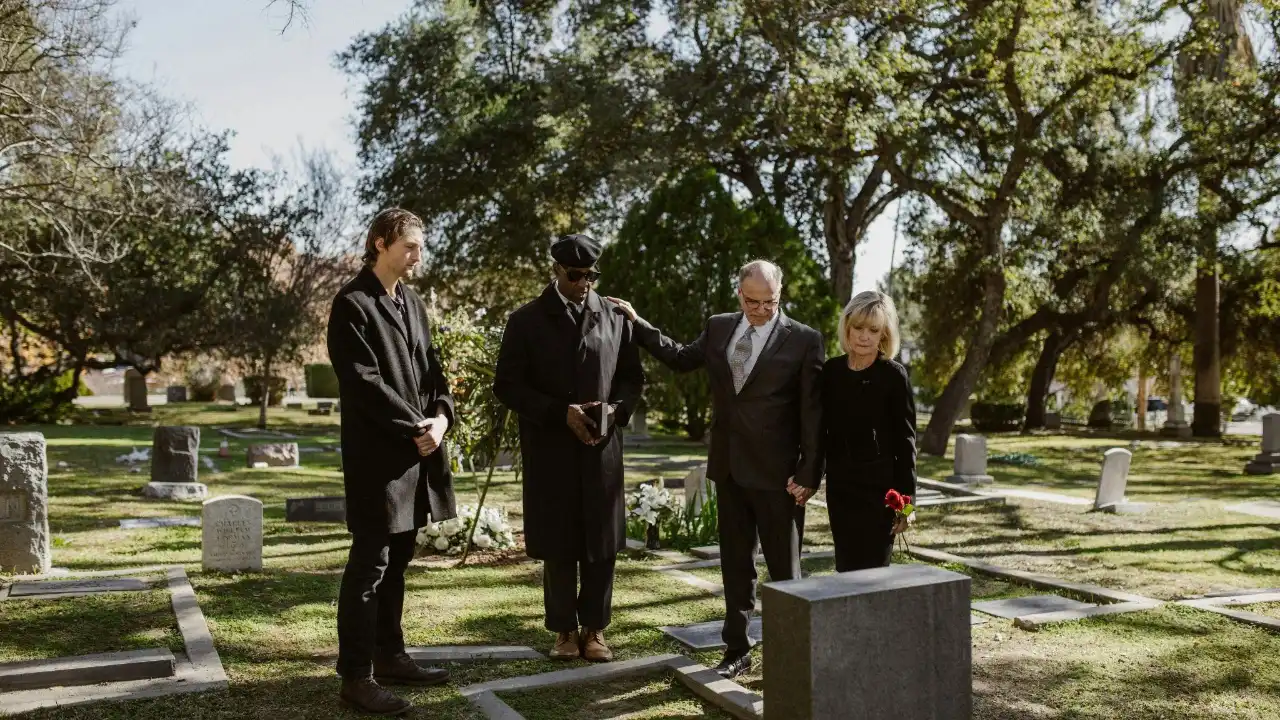NEWS
What Are the Steps for Planning a Funeral

Funeral services provide an emotional way of saying farewell, whether you choose burial or cremation. Your wishes can help guide the event and let loved ones know exactly what you would like them to experience during this special time.
As soon as possible, discuss your wishes with family and a trusted friend to reduce stress during this tough time. This will ease some of the pressure associated with planning during times of grief.
Preparation
As death can be an emotionally difficult event, taking some time for grieving is wise before starting funeral planning – this will allow everyone involved to move through it more smoothly and make planning easier for all. You can click here to learn more about these customs around the world.
Funerals can be deeply sorrowful events where friends and family come together to say farewell to a deceased loved one who is often placed inside an open or closed casket. A reception may follow where attendees can share stories about them as well as photos.
Planning a funeral requires knowing the wishes and preferences of both the deceased and family, including whether burial or cremation was their chosen option; additionally, memorial services or visitations could be part of their final wishes.
Preparations for planning a funeral include compiling a list of those who should be informed, selecting pallbearers and eulogy speakers, selecting music selections and musicians, and adding personal touches such as flowers and grave markers at this stage. Furthermore, you will want to ensure you have the proper clothing for the occasion. You can click the link: https://www.reddit.com/r/what_have_people_actually_worn_to_funerals_youve/ to learn more.
Ceremony
Once final arrangements have been made, it is time to plan the ceremony. This may involve working with third-party entities such as cemeteries, churches, florists, and vault companies in coordinating floral arrangements for floral displays, the venue, transportation arrangements, and transportation needs as well as creating the funeral program with slideshows of photos or memories as well as ordering of service details and list of speakers.
Create a funeral or memorial service that honors and celebrates your loved one’s unique life story, whether through burial or an alternative celebration event.
Your next steps should include deciding whether you would like a viewing or visitation service and choosing clothing for their body, holding either a private burial or graveside service, and purchasing caskets, urns, and grave marker items. A reputable local funeral home can help guide this process. This can be a benefit for grieving family members
Many families choose a celebrant – an experienced master of ceremony and storyteller – to lead the service, working closely with them to craft a service that reflects your loved one’s beliefs, values, and aspirations during such an emotional time. Furthermore, it is vitally important that close family and friends be kept up to date about all details related to services.
Burial
If the deceased will be interred, his or her family must decide between having a casket service or visitation/viewing service, selecting a grave site/crypt, purchasing any necessary headstone(s), arranging to display photos or personal items, purchase and arrange for their display.
Individuals should compose an obituary and select pallbearers and speakers who will deliver a eulogy at the service. Furthermore, religious, cultural, or personal passages should be read aloud at this event. Finally, choose a florist and purchase flowers and decorations necessary for the service and ceremony.
If the deceased wishes to prearrange their funeral, they must first select an agent they trust who can manage their final wishes (Public Health Law 4201). Once appointed, this agent should follow any directives left by the deceased regarding payment methods for services (such as through pre-paid funeral insurance or trust agreements).
Reception
Funerals are a vital event, whether planned in advance or the result of an unexpected loss. Although discussing funeral arrangements is never easy, being prepared can make grieving easier for both family members and you.
As part of planning a funeral, the initial step should be deciding on the type of service you would like. Options might include wake or visitation services, memorial services, or graveside burials. Once this decision is made, select your preferred venue with backup locations in case one venue cannot accommodate you.
Next, your funeral director will hold an arrangement conference to discuss and arrange your preferred services. It is beneficial to bring along someone from your own circle who can act as support while taking notes during this meeting.
At an arrangement conference, all aspects of the funeral service will be discussed in depth. Here, you will select who will read the obituary, select a date for it, and decide whether you want an open or closed casket.
In addition, third parties such as photo slideshow providers, music services, and floral designers must be coordinated to coordinate photo slideshows, slideshows, music performances, and decorations; ushers and pallbearers (if necessary) as well as any speakers offering eulogies or tributes must be chosen before final decisions can be made on funeral service details.
Kenneth is a proud native of sydney, born and raised there. However, he pursued his education abroad and studied in Australia. Kenneth has worked as a journalist for almost a decade, making valuable contributions to prominent publications such as Yahoo News and The Verge. Currently, he serves as a journalist for The Hear Up, where he focuses on covering climate and science news. You can reach Kenneth at [email protected].










